Form Saints
St Andrew the Apostle Feast Day - 30 November
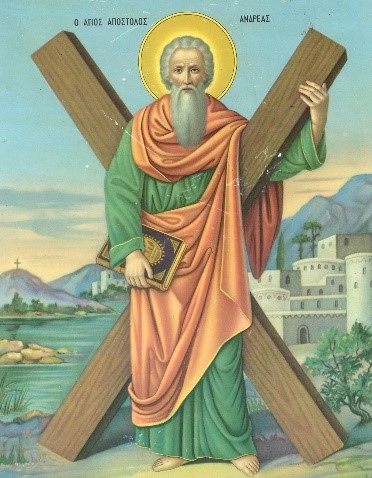 Saint Andrew was one of the Twelve Apostles of Jesus Christ. His brother was Saint Peter. Saint Andrew is the patron saint of Scotland and of Russia.
Saint Andrew was one of the Twelve Apostles of Jesus Christ. His brother was Saint Peter. Saint Andrew is the patron saint of Scotland and of Russia.
Andrew and his brother were fishermen. They were called from their fishing by Jesus, who promised to make them fishers of men. Andrew is always among the first Apostles listed in the Gospels of Matthew, Mark, and Luke. In the Gospel of John, Andrew is the first apostle named and was also a disciple of Saint John the Baptist before Jesus’ call.
Andrew may have preached in Greece after the death of Jesus. According to one account, Saint Andrew died in what is now Pátrai, Greece, sometime before 70 ce. He was reportedly killed by crucifixion, or by being hung on a wooden cross. The cross was later described as X-shaped. The X-shaped cross is depicted on the Scottish flag.
Saint Andrew is the patron saint of Russia because it is believed that Andrew preached in Russia, traveling as far as Kyiv.
St Clare of Assisi Feast day - August 11
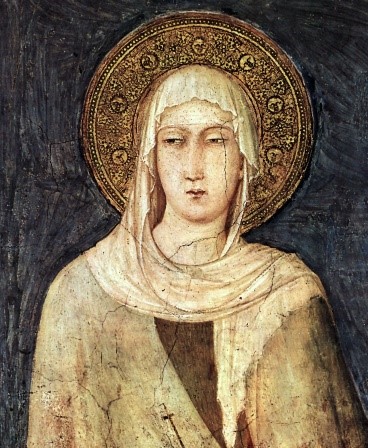 Even as a child, Clare had a special friendship with Jesus. She loved to pray and to do holy things for him. But it was the preaching and example of a young man named Francis during Lent of 1212 that gave the eighteen-year-old Clare a path for her life. Clare’s father, Count Favorino Scifi, had made plans for his beautiful daughter to marry a rich young nobleman. But Clare, who had given her heart completely to Jesus as a young teenager, was determined not to marry.
Even as a child, Clare had a special friendship with Jesus. She loved to pray and to do holy things for him. But it was the preaching and example of a young man named Francis during Lent of 1212 that gave the eighteen-year-old Clare a path for her life. Clare’s father, Count Favorino Scifi, had made plans for his beautiful daughter to marry a rich young nobleman. But Clare, who had given her heart completely to Jesus as a young teenager, was determined not to marry.
Clare knew her father, who had a stubborn streak, would not grant her wish easily. So after meeting secretly with Francis about what to do, she and her cousin Pacifica slipped out of the palace in the middle of the night on March 20—Palm Sunday and the beginning of Holy Week. When the brothers met the young women, they broke into song as they proceeded to the little chapel of Saint Mary of the Angels. There, Clare and Pacifica traded their rich clothing for simple habits and veils, and after singing and praying, Francis cut off Clare’s long, beautiful hair as a symbol of her commitment to a new way of life.
St Francis of Assisi Feast Day - 4th October
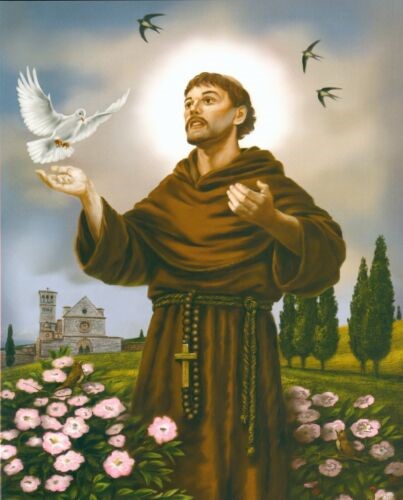 Born in Assisi, Italy in 1181 to a wealthy family of silk merchants, Saint Francis abandoned a life of luxury for a life devoted to Christianity after reportedly hearing the voice of God, who commanded him to rebuild the Christian church and live in poverty.
Born in Assisi, Italy in 1181 to a wealthy family of silk merchants, Saint Francis abandoned a life of luxury for a life devoted to Christianity after reportedly hearing the voice of God, who commanded him to rebuild the Christian church and live in poverty.
Francis became a devotee of the faith and his reputation spread all over the Christian world. He founded the Franciscan order in 1209 and later a women’s order called the Poor Clare’s which still exist today. During his life he also developed a deep love of nature and is known as the patron saint of the environment and animals. He even used to read the Bible to the Birds. He was canonised in 1228 and his life and words have had a lasting resonance with millions of followers across the globe.
“Preach Christ’s message and when necessary use words.”
St Bernadette Feast Day - 16th April
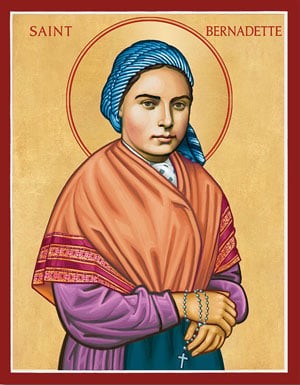 Saint Bernadette Soubirous was born on January 7, 1844 into a very poor family. She had a pleasant personality, very poor health, and bad asthma. Bernadette helped her mother around the house and took care of her siblings. She once said “I was nothing and of this nothing God made something great.”
Saint Bernadette Soubirous was born on January 7, 1844 into a very poor family. She had a pleasant personality, very poor health, and bad asthma. Bernadette helped her mother around the house and took care of her siblings. She once said “I was nothing and of this nothing God made something great.”
During the year 1858, Bernadette was 14, while collecting firewood, Bernadette is said to have seen Mary, the mother of God, dressed in white with a blue sash and a yellow rose on each foot. Bernadette is said to have witnessed the same vision 18 times.
During one vision, the figure of Mary asked Bernadette to drink at the spring beneath her feet. Even though this area was muddy, the next day, the ground flowed with clear water. Bernadette was then told to have a chapel built in the exact spot where the vision had taken place.
St Patrick Feast Day - 17th March
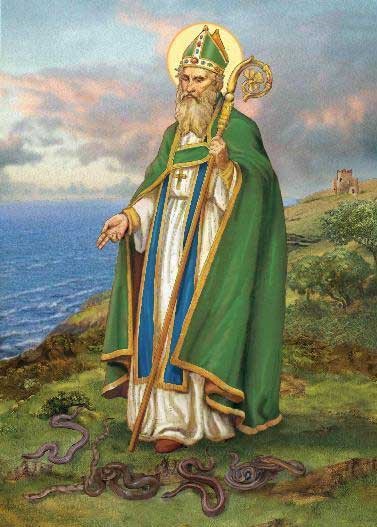 Despite being the patron saint of Ireland, Saint Patrick is actually thought to have been born in Wales towards the end of the fourth century.
Despite being the patron saint of Ireland, Saint Patrick is actually thought to have been born in Wales towards the end of the fourth century.
When he was a teenager, Patrick was kidnapped by Irish raiders and sold to an Irish farmer in the county of Antrim. Here, he was treated like a slave. He suffered hunger and neglect here, and eventually turned to God and Christianity to combat this suffering. He was kept here for six years and turned to the Bible and prayer for comfort.
One night, he heard the voice of God in a dream, who told him to escape from this mountain and go to a harbour, where there would be a boat waiting to help him escape and take him home. With his newfound powerful faith, he trusted the voice and made his attempt to escape. He made it to a harbour and was allowed on to a ship, where he found his way home.
He continued to pray to God and eventually became a priest at a monastery in Tours, France. Furthermore, he worked his way up to becoming a Bishop, before returning to Britain. At the time, Ireland was a Pagan country that didn’t follow Christianity, and Patrick wanted to change this, so he returned to Ireland to teach them about God and the faith. When he arrived in Ireland trying to spread the word, he was first met with lots of resistance. Eventually, he managed to spread his teachings through preaching, baptisms and writing.
St Joan of Arc Feast Day - May 30th
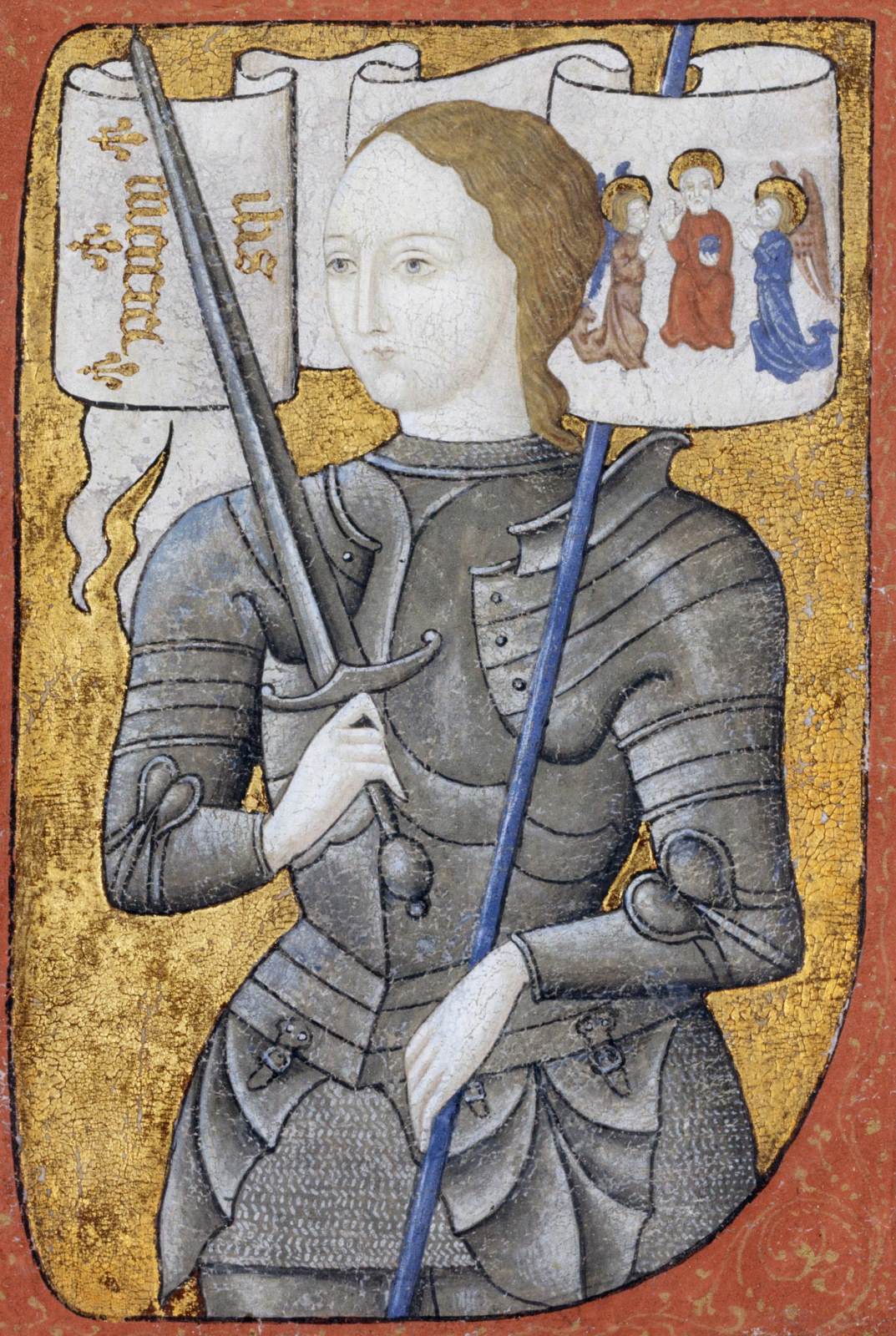 Joan of Arc grew up in a small town in France. Joan was also very religious. When Joan was around twelve years old she had a vision. She saw Michael the Archangel. He told her that she was to lead the French in a battle against the English. After she drove the English out she was to take the king to be crowned at Rheims.
Joan of Arc grew up in a small town in France. Joan was also very religious. When Joan was around twelve years old she had a vision. She saw Michael the Archangel. He told her that she was to lead the French in a battle against the English. After she drove the English out she was to take the king to be crowned at Rheims.
Joan continued to have visions and hear voices over the next several years. She said they were beautiful and wonderful visions from God. When Joan turned sixteen she decided it was time to listen to her visions and take action.
She launched an attack against the English. Joan led the attack and during one of the battles was wounded by an arrow. Joan didn't stop fighting. She stayed with the troops inspiring them to fight even harder. Eventually Joan and the French Army repelled the English troops and caused them to retreat from Orleans. She had won a great victory and saved the French from the English.
St Martin de Porres Feast Day - 3rd November
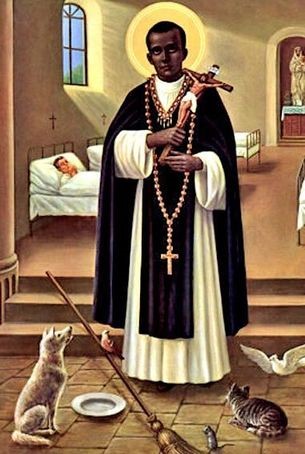 St Martin de Porres was born in Lima, Peru in 1579. His father was a Spanish nobleman and his mother a freed slave from Panama. Martin’s father abandoned the family when he was a child, leaving them destitute, but despite growing up in deep poverty, Martin attended a primary school for two years and was then placed with a local barber, from whom he learned surgical and medical skills.
St Martin de Porres was born in Lima, Peru in 1579. His father was a Spanish nobleman and his mother a freed slave from Panama. Martin’s father abandoned the family when he was a child, leaving them destitute, but despite growing up in deep poverty, Martin attended a primary school for two years and was then placed with a local barber, from whom he learned surgical and medical skills.
Compassionate and eager to serve, he began to volunteer with the Dominican friars age 15 and helped care for the sick in the monastery infirmary. He was an extraordinarily kind person and before long, he began to work miracles, curing so many people that everyone in Lima would send for Brother Martin when there was sickness. He founded an orphanage and a children’ hospital in Lima and was known for treating people of all races and colours equally, as he saw them all as his sisters and brothers in Christ.
He was canonised in 1962 by Pope John XXIII he is the patron saint of mixed-race people, public health workers, and all those seeking racial harmony.
“You must love your neighbour as you love yourself”
St. Teresa of Avila Feast Day - 15th October
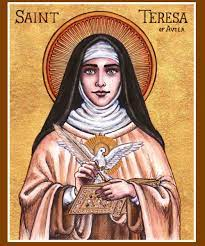
St. Teresa of Avila is the founder of the Discalced Carmelites. In 1970 she was declared a Doctor of the Church for her writing and teaching on prayer, one of two women to be honoured in this way. St. Teresa is the patron saint of Writers and Headache sufferers. Her symbol is a heart, an arrow, and a book. She was canonized in 1622.
As a teenager, Teresa lived a fairly ordinary life, she was distracted from Faith until she understood that God was calling her to be a nun, she decided to leave her parents’ house, but her father refused to give permission to become a nun. So, she secretly left home to join the local Carmelite Convent and only then did her father finally gave his permission.
St. Teresa was independent and autonomous. she established small convents throughout Spain. She travelled on foot, and thus became called the “walking” saint. She taught her nuns to think and pray on their own, and to concentrate in order to hear the Lord within themselves, in what she called the “Interior Castle.” She always abandoned herself to God’s will, and was a very determined woman who knew where she was going. She often used to say, “I am yours, Lord; I was born for You. What do you want from me?”
The surest way to determine whether one possesses the love of God is to see whether he or she loves his or her neighbour. These two loves are never separated. Rest assured, the more you progress in love of neighbour, the more your love of God will increase.











